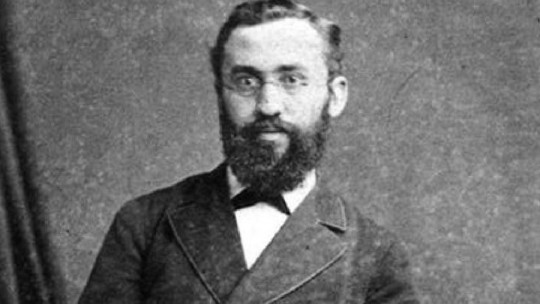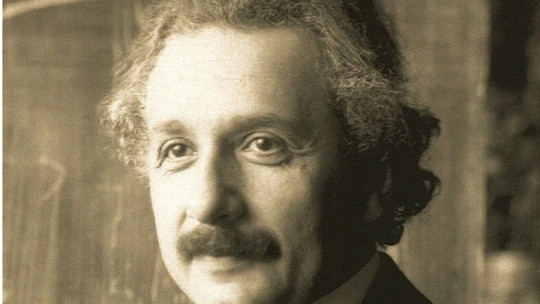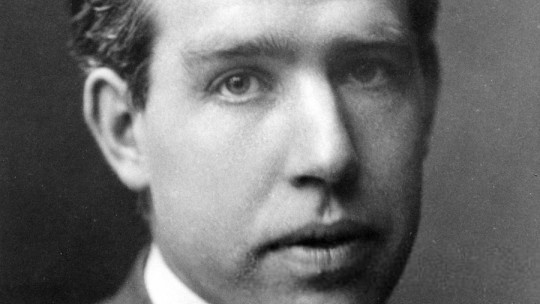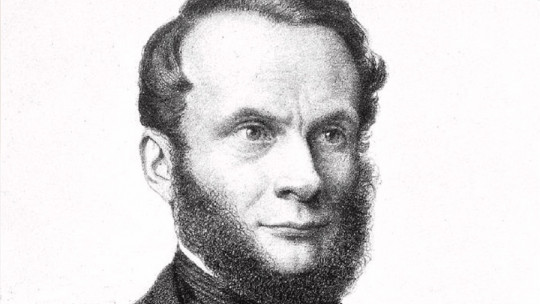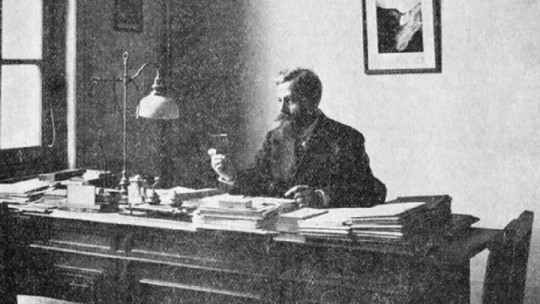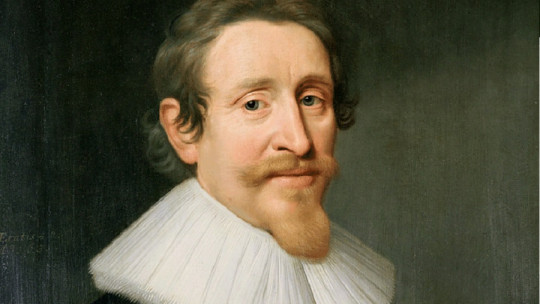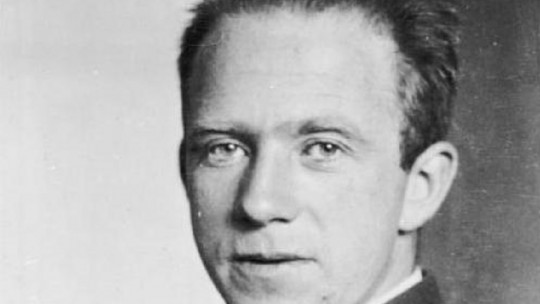Hendrik Antoon Lorentz is one of the most important scientists in the recent history of the Netherlands, with discoveries that have contributed to physics as we know it today and influencing illustrious figures such as Albert Einstein or Ernest Rutherford.
Very given to both the sciences and languages, Lorentz contributed to the scientific landscape of his time by publishing several works on his scientific findings not only in his native Dutch, but also in French, German and English.
Described as versatile, kind and charismatic by his contemporaries, Lorentz has gone down in history for being the one who gave strength to the idea that electromagnetism and light were related to negatively charged subatomic particles, electrons. Today we are going to discover what happened to his life through this biography of Hendrik Antoon Lorentz in summary format.
Brief biography of Hendrik Antoon Lorentz
Hendrik Antoon Lorentz was a Dutch physicist who won the Nobel Prize in Physics in 1902. Lorentz’s discoveries constituted an immense step in the development of electromagnetic theory, and gave a theoretical and practical boost to several of the important discoveries of the last century. , among them Albert Einstein’s Theory of Relativity.
His childhood
Hendrik Antoon Lorentz was born on July 18, 1853 in Arnhem, Netherlands His parents were Gerrit Frederik Lorentz, a wealthy horticulturist, and Geertruida van Ginkel, who died when Lorentz was only four years old. When his wife died, Gerrit Lorentz remarried Luberta Hupkes.
As a child, Hendrik Antoon attended two of the three daily shifts at the local school. When the first institute was opened in his hometown in 1866, the young Lorentz was already ready to begin the third year. He was an outstanding student with spectacular results not only for sciences such as mathematics and physics, but also for French, German and English.
University education and academic life
At the end of the fifth and last year of high school, Hendrik Antoon Lorentz studied classical languages, something required in his time to be able to pursue university studies. He enrolled in 1870 at the University of Leiden and, just one year later, obtained a degree in mathematics and physics In 1872 he returned to his native Arnhem to teach mathematics in the afternoon hours at the local institute.
Around this time he was preparing his doctoral thesis on the reflection and refraction of light, titled in Dutch “Over de theorie der terugkaatsing en breking van het licht”. In this thesis he explained with great clarity a concept that had not yet been translated into Dutch, and he also dared to perfect in this way the electromagnetic theory proposed by James C. Maxwell. He defended his thesis in 1875, obtaining his doctorate with it when he was only 22 years old.
In 1878 he was appointed professor at the University of Leiden, taking charge of the institution’s new department of theoretical physics In his inaugural reading he spoke about molecular theories in physics, an important text for the history of Dutch physics and titled “De moleculaire theoriën in de natuurkunde” (Molecular theories in physics).
In 1880, Henrik Lorentz established the relationship between the polarization of a molecule and the refractive index of a substance composed of molecules with this polarization. He made this discovery in the same way as the Danish physicist Ludwig Valentin Lorenz, working independently. For this reason this relationship is known as the Lorenz-Lorentz formula.
In 1881 Lorentz was admitted as a member of the Royal Netherlands Academy of Arts and Sciences. In that same year He married Aletta Catharina Kaiser , daughter of JW Kaiser, professor at the Academy of Fine Arts, who would become the director of the Rijksmuseum in Amsterdam. Kaiser was an illustrious character, who would become the designer of the first Dutch postage stamps.
Electromagnetic theory
During the first twenty years living in Leiden, Henrik Antoon Lorentz dedicated them to studying the electromagnetic theory of electricity, magnetism and light. After a while he ended up expanding his research to various topics, including hydrodynamics and general relativity. His greatest contributions were to electromagnetism, electron theory and relativity
At this time, Lorentz’s intention was to develop a unique theory that would explain the relationship between electricity, magnetism and light. For this reason, in 1892 he published “La théorie électromagnétique de Maxwell et son applications aux corps mouvants” which, as its title indicates, was based on Maxwell’s studies and stated that the phenomena of electricity are due to the movements of elementary electrical particles, electrons, a term that was originally created by George Johnstone Stoney.
At that time it was known that electromagnetic radiation was produced by the oscillation of electrical charges, but the charges that generated light were still unknown. It was assumed that an electric current was formed by charged particles, Hendrik Antoon Lorentz deduced that the atoms of matter must be charged particles and predicted, in 1892, that the oscillations of these particles must be the source of light
Lorentz proposed that, if instead of using Galileo’s transformations other transformations were used, Maxwell’s equations about the propagation of light would be invariable, so the ether should not be used as a reference system. His proposal, which would end up being called the Lorentz transformations, related the coordinates of space and time, allowing to describe electromagnetic phenomena when they go from a fixed system to another with constant speed
With this, he not only explained the perceived absence of relative motion of the Earth with respect to the ether, as indicated by the experiments of Albert Abraham Michelson and Edward Morley, but also helped Albert Einstein later propose the theory of relativity.
Lorentz transformations are so important to physics because They made the equations of mechanics variable, which until that time seemed absurd These formulas describe the increase in mass, shortening of length, and time dilation that are characteristics of a moving object. These ideas laid the foundations for Einstein’s special theory and, in fact, there are those who consider that its precursor was Hendrik Antoon Lorentz.

Discovery of the Zeeman effect and Nobel Prize
During the 1880s, Lorentz commissioned his student and personal assistant Pieter Zeeman to investigate whether a strong magnetic field could affect the oscillations and wavelength of light. What Zeeman observed in 1986 was that the sodium D lines of a flame decomposed under a strong magnetic field, which led him to formulate what is today known as the Zeeman effect. This postulates that if a light source is subjected to a magnetic field, spectral lines of different wavelengths decompose into more components, with slightly different frequencies.
With this discovery, Hendrik Antoon Lorentz and Pieter Zeeman won the Nobel Prize in Physics in 1902 This recognition was made for their great work on the influence of magnetism on radiation phenomena, a contribution that would be crucial for physics at the beginning of the 20th century, so much so that it would help Einstein to continue developing his Theory of Relativity and formulate it as and as we know it today.
In 1907, while in Leipzig, Germany, he published various memoirs gathered under the title “Abhandlungen über theoretische Physik” (Treatise on Theoretical Physics). In 1909 he published his book “Theory of electrons”. Between 1919 and 1920 he published five volumes in which he collected his theoretical physics lectures at the University of Leiden.
Last years and death
In 1908, Hendrik Antoon Lorentz was awarded the Rumford Medal and the Copley Medal , awarded by the Royal Society of London in honor of his scientific work and for outstanding achievements in physics. In 1912, Lorentz was appointed director of research at the Teyler Institute in Haarlem and secretary of the Dutch Society of Sciences. Despite his new positions, he continued to work as an honorary professor at Leiden University, teaching a class every Monday morning.
In 1919 Lorentz was appointed president of the committee for the study of seawater movements to be organized during and after the recovery of the Zuiderzee dam, one of the greatest works of hydraulic engineering of all time. His theoretical calculations, which were the result of arduous eight-year research, were confirmed in practice and since then they have been a classic in the science of hydraulics.
Despite receiving numerous proposals for professorships to practice abroad, Hendrik Antoon Lorentz preferred to stay in his native Netherlands, working at Leiden University until his retirement in 1923. He would continue as an emeritus professor at the institution until his death.
In 1923 Lorentz was elected as a member of the International Committee for Intellectual Cooperation, a body of the League of Nations (the pre-World War II UN). This committee was made up exclusively of the most illustrious and gifted academics. Lorentz became its president in 1925. In addition, he was president of all the Solvay Congresses, conferences where the most eminent scientists of the time met.
In January 1928, Hendrik Antoon Lorentz became seriously ill, dying on February 4 of that same year in Haarlem , at the age of 74. On February 10, the funeral was held, presided over by Sir Ernest Rutherford on behalf of the Royal Society. At the last bell that indicated 12 noon, all telegraph and telephone services in the Netherlands stopped for three minutes as a tribute to the greatest Dutch citizen of the time.

